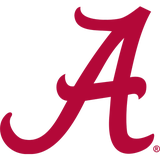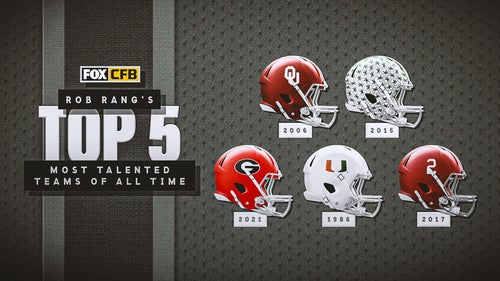
Optics or reality? Southeast US reigns over college football
NEW ORLEANS (AP) Oklahoma is one team in this year's College Football Playoff that is not like the others.
When it comes to regional distinctions, the Sooners are the only team left that can loosen the virtual stranglehold that the Southeastern U.S. has had on college football's national championship for the past decade.
Of the 11 national championship games since the 2006 season, 10 have been won by six teams based in the states of Alabama, Florida, Louisiana and South Carolina, ''which is crazy,'' said Clemson defensive lineman Christian Wilkins, one of the best players in the playoffs but who isn't from the Southeast. He is from Massachusetts.
Odds are, the winner will come from the Southeast again this year, with the other three semifinalists being Alabama, Clemson and Georgia.
It begs the question, are college football players and fans from the Midwest to the West Coast starting to feel a little disenfranchised as it pertains to the privilege of celebrating national titles?
''There are still some strong football programs outside the Southeast that really care about football and have fans that are very passionate,'' said Clemson co-offensive coordinator Jeff Scott. ''But there's probably a heavier concentration in the Southeast.
''College football is probably bigger than the NFL in a lot of places around the Southeast,'' Scott added. ''In other parts of the country, that's not true.''
There is at least anecdotal evidence to support Scott's contention.
As popular as the Saints are in Louisiana, there's a common refrain that people love the Saints on Sundays and are LSU fans six days a week. In Georgia, the Bulldogs arguably trump the Falcons in terms of popularity, particularly outside Atlanta.
In several football-mad states such as Alabama and South Carolina, there are no pro teams, and the major college teams are institutions with long histories and enormous followings.
''People eat, sleep and breathe everything football down south and it's not exactly the same up north,'' Wilkins said. ''It was a little bit of a culture shock when I got down here and got to see the Saturday game day environment, just completely different than I had ever been used to or ever seen.''
ESPN's Chris Fowler said it likely helps the ratings if all regions are represented, then all fans are probably more engaged.
''But you have to select teams to the playoff purely on merit. You can't worry about the league. You can't worry about the region,'' said Fowler, the network's lead college football announcer. ''You have to pick the four best teams. And if the four best teams are all from the Southeast, or three out of the four, then so be it.
''If you're from another part of the country, then go get better.''
Whatever the reason for the Southeast's success, the optics of supreme football in the region has been a powerful reality in recruiting - the lifeblood of major college football.
With the help of enhanced television exposure and the growth of social media, the historically strong programs in the Southeast have been able to parlay their extraordinary local support into not just keeping a lot of top players close to home, but also attracting some of the best from outside the region.
Alabama defensive back Minkah Fitzpatrick, recently named the Bednarik Award winner as the nation's top defensive player, is from New Jersey.
''There's a whole bunch of different things that played into my decision ... but one of them was the challenge that it posed, being in the Southeastern Conference,'' Fitzpatrick said. ''There's a lot of talent here. The demands that it placed on me and my teammates - I thought it would make me the best player possible.''
Scott's experience as a recruiter is that social media has allowed schools from the Southeast to better connect with recruits everywhere in the past 10 to 15 years and give them a taste of their programs' tradition, history and enormous fan bases.
''Ten or 15 years ago, I don't know that we could have gone up (to Massachusetts) and gotten a guy like Christian Wilkins. But for several years he's following Clemson football on social media. He's learning about The Rock, The Hill, all about our program,'' Scott said, referring to a pre-game ritual of touching Howard's Rock before trotting down an embankment to the field. ''We feel like our brand is out there all over the country more than it was 10 years ago.''
Alabama punter J.K. Scott, a two-time Ray Guy Award finalist, said he wasn't keenly aware of Alabama football or its illustrious football history until he was being recruited during high school in Colorado.
Scott said the most popular sports among kids his age back home were lacrosse and soccer.
''The region where I came from, football was a big deal, but it wasn't nearly as big of a deal as down here,'' Scott said. ''People put a lot more of their time into it in the Southeast. Culturally, it's so much bigger. I don't know why that is, but I think it might have something to do with why the programs are so big. There's so much support, so much money coming in.
''That's a recruiting tool because Alabama and other schools have the ability to build really nice facilities.''
---
AP College Football Writer Ralph D. Russo contributed to this report.
---
More AP college football: https://collegefootball.ap.org and https://twitter.com/AP-Top25








